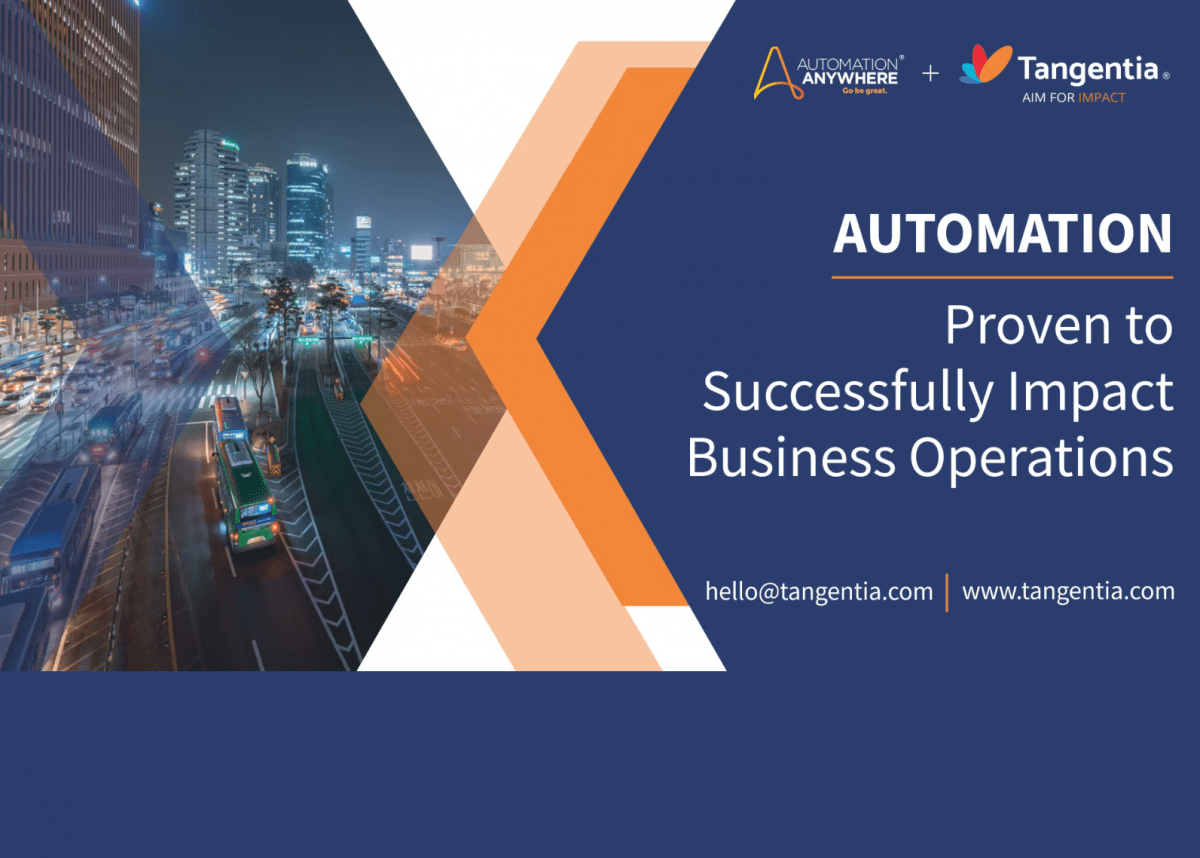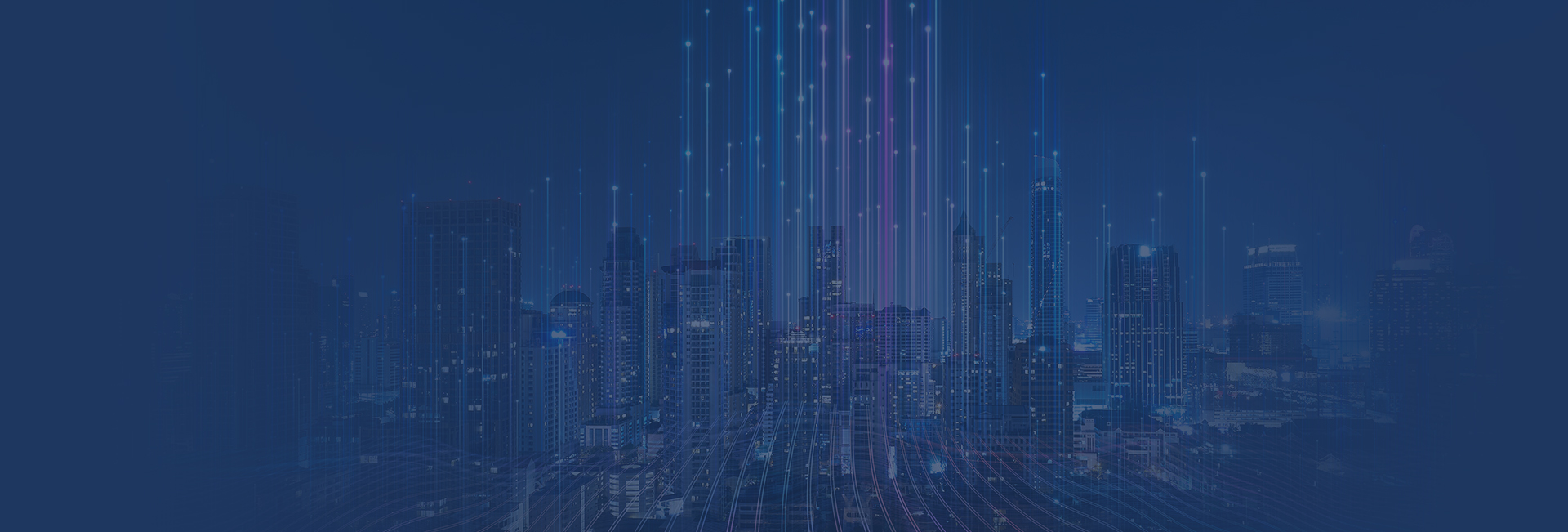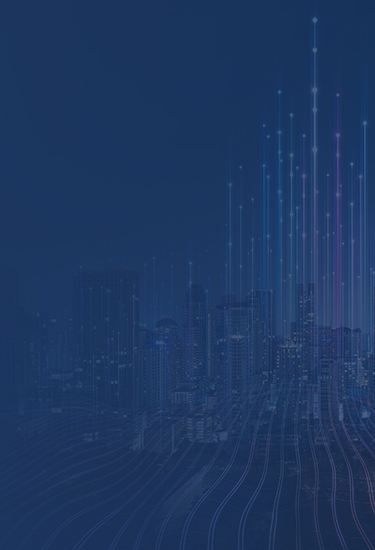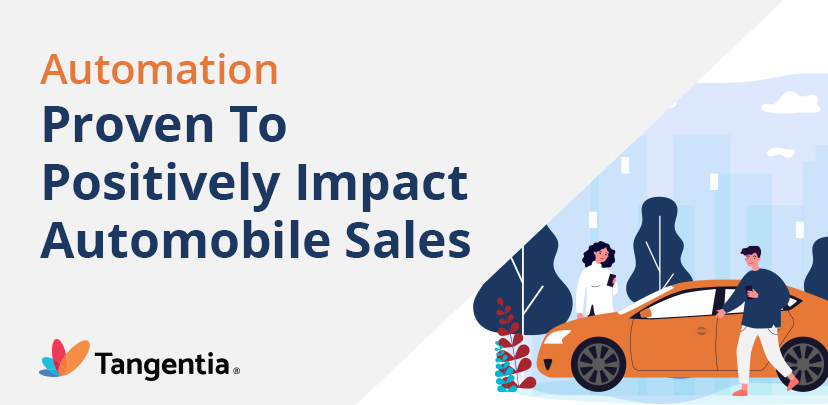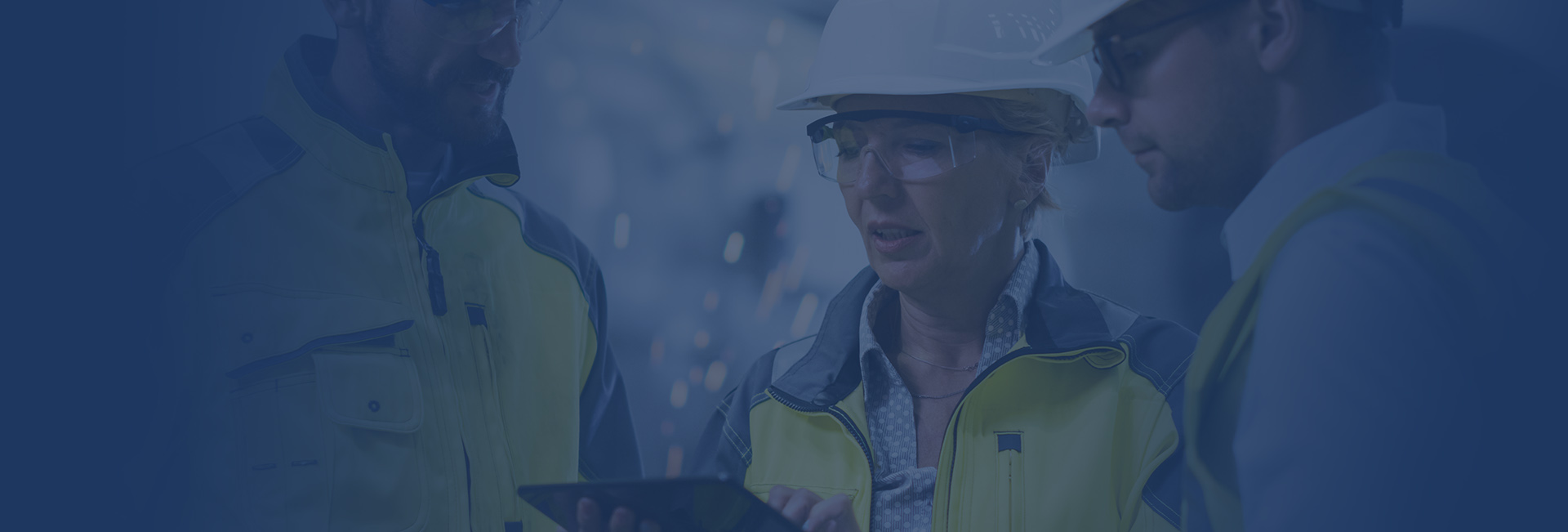Category: Automation
Tangentia Videos – Automation: Proven to Successfully Impact Business Operations
Create, Innovate and Scale with AI
The current use of artificial intelligence (AI) is extensive. It is being used to automate front-office and back-office processes, improve data analytics, and enhance the employee and customer experience in a variety of industries. However, we are at the very beginning of the AI journey and there are many questions to be answered, not the least of which is what’s next in AI.
It turns out, AI has a big future and there is a lot of collaboration going on between global AI leaders to accelerate and scale innovation to get more value from AI. And one of the most significant contributions of AI both now and in the future is its ability to empower creativity and innovation.
Empowering Creativity
Right now we are in the emerging stages of AI. It is powerful but limited. It does one thing in a single domain very well, applying speed and accuracy to that task. However, the goal is to expand AI capabilities to be able to multitask over multiple domains, taking information from one domain and using it in another domain.
This extends to creative capabilities. AI currently has the ability to do a number of creative tasks. It can take an image and produce a natural language caption. It can take a photograph and re-render it in the style of any painter/artist. It can create a photo-realistic image based on unstructured data.
This ability to create a photo-realistic image from the AI’s “imagination” is possible with the use of the Generative Adversarial Network (GAN) model. This GAN can be manipulated to activate and deactivate different units to add and remove aspects of an image. For example, a window can be added to or removed from an image.
The goal here is to use AI not only to predict or make a decision but to generate. This generative AI can be put to many different uses, such as creating new recipes for food companies, new perfume fragrances for fragrance makers, and new concrete formulations that are more environmentally friendly. It can even be used to develop data science that has a higher level of safety and privacy, which is useful for financial institutions or any organization that deals with personal customer data. Ultimately, these generative uses of AI can lead to better business outcomes.
Even in the business sector, generative AI can be used in a creative capacity. An example of this is generating arguments from various points of view. This can include the data-driven writing and delivery of a speech and listening comprehension that will allow the AI to model human dilemmas to understand the various issues from different points of view.
Ultimately, the future of AI is not going to just be about taking data and making a prediction or informing business decisions, but to actually synthesize and create in a way that empowers humans and make us be better able to see both sides of an issue, create a product, create art, or design something. This is a powerful path for AI.
The Ability to Scale
AI not only has the power to generate, but also to scale. Take the oil and gas industry. It is possible to use AI to oversee maintenance activities and communicate those activities to workers in the field. Whether you have one platform or 50, this solution can easily be scaled accordingly and can change with the needs of the company.
AI can also perform federated learning, which is the ability to build a composite model from distributed data. This is invaluable in the finance industry, which handles significant amounts of personal data. To handle this data at a large scale would traditionally require all the data to be transferred to a central data store. This comes with risks, such as data breaches and non-compliance with regulations.
In this situation, federated learning can manage distributed data, learning from each local or private dataset and then developing a global model that allows for the delivery of sensitive data updates to the central server. This avoids bringing all the data to a centralized location and allows data owners to retain complete control over their data.
Ultimately, AI has a lot of potentials to improve creativity and innovation at any scale. Individuals, companies, and industries can harness the power of AI to drastically increase the value gained from this technology, driving business outcomes and fueling new ways of solving problems that rely on data access and analysis.
Ebook – 83% of Manufacturers Report Rapid ROI from RPA
Using RPA to Expand B2B Automation Beyond EDI
The Tangentia EDI Gateway is a platform that seamlessly integrates with multiple business systems to enable small- and medium-sized businesses (SMBs) and large enterprises to attain full compliance with the EDI requirements of their trading partners, whether they are on the front end or the back end.
The Tangentia Gateway provides a range of state-of-the-art features, such as EDI connectivity to over 2,000 trading partners globally, full integration with eCommerce platforms and ERP/WMS/Carrier systems, support for multiple EDI standards, and support for multiple configurable user accounts.
However, automation can do so much more. It is vital to any business, large or small, to expand beyond their EDI to get the most out of automation. Tangentia makes this possible by providing an RPA platform to expand your order-to-cash and procure-to-pay systems.
Expanding the Order-to-Cash System
The current order-to-cash system involves the supplier organization sending the buying organization an invoice once they have received the purchase order. In this way, 20% of your EDI customers account for 60% to 80% of your transactions. But what about the other 80% of your customers that account for 20% to 40% of your transactions? These customers are small businesses that lie outside of your EDI and that means you are stuck manually processing their transactions.
This is where robotic process automation (RPA) comes in. RPA has the power to automate transactions with customers outside of your EDI. This includes transactions made via email, fax, PDF, and paper, making it possible for you to automate 100% of the transactions you have with your customers.
The benefits of automating order-to-cash are clear. They include:
- Onboarding smaller customers that do not have EDI capabilities
- Reducing back-office staff by as much as 90%
- Increasing the speed of payments
- Improving cashflow
- Reducing costs and increasing performance by as much as 83%
- Improving customer service
Expanding the Procure-to-Pay System
The procure-to-pay system from the side of the buying organization operates in a similar fashion. In this situation, it is still 20% of the EDI vendors accounting for 60% to 80% of the transactions, with smaller businesses operating manually via email, fax, PDF, and paper. Even vendors such as communications suppliers and cleaning companies send invoices manually.
Again, RPA can automate the procure-to-pay process, onboarding those vendors that do not operate via an EDI. Manual transactions can be processed through the RPA platform in a similar manner to order-to-cash transactions. The benefits of this include:
- Reducing invoicing costs of up to 80%
- Reducing invoice processing time from days to minutes
- Increasing data capture for improved decision making
- Improving procure-to-pay efficiency and vendor relationships
Which Bot Type is Right For Your Business?
RPA relies on software bots that are capable of accessing and pulling data from databases, forms, purchase orders, invoices, and other sources of data and information. For example, a bot can read through an invoice, access the required information, fill out forms when required, and will learn the first time it goes through this process. The next time the bot encounters a similar invoice, it will know precisely what to do.
Tangentia Intelligent Automation (TiA) is Tangentia’s bot platform. TiA bots are capable of performing tedious, repetitive tasks and processes that are not the best use of human time, and they do it faster and without human error. An example is the TiA bot that deals with purchase orders and invoices. This bot will:
- Open the purchase order attachment in the email
- Scan the purchase order
- Pull the required information from the purchase order
- Input the information into the proper fields of an Excel file
- Create and fill in all the details of the sales order
- Create and automatically send the invoice to the customer
One purchase order could take as long as 10 minutes to process when it is done manually. However, the bot can process four purchase orders in less than 30 seconds. This is a win, especially for time-sensitive purchase orders. It can take less than four hours from the receipt of a purchase order to dispatch.
Expand Your EDI Capability with RPA
The turmoil of today’s global environment, which is largely driven by the COVID-19 pandemic, has increased the need for automation. However, EDI is limited to partners who also have an EDI system. RPA can expand your automation capabilities to include partners who do not have EDI capabilities. In fact, close to 50% of businesses worldwide will increase RPA adoption simply due to COVID-19, with the following goals:
- Open the purchase order attachment in the email
- Increasing agility, resilience, and diversity in supply chain operations
- Dealing with increased cost pressures through the automation of back-office processes and operational tasks
- Supporting remote workforces
It’s time to start thinking about expanding your automation. If you are interested in learning more about what RPA can do for your order-to-cash and procure-to-pay systems, reach out and speak with a Tangentia team member today. We’re looking forward to hearing from you!
Expand Your B2B Automation Beyond EDI Using RPA. Watch our 45 min On-Demand webinar where you will learn how RPA & EDI can extend your automation capabilities.
Expand Your B2B Automation Beyond EDI Using RPA
Watch our 45 min On Demand webinar where you will learn how RPA & EDI can extend your automation capabilities
Unattended Versus Attended Bots — Which Ones are Right For Your Business?
More and more processes are becoming automated for businesses of all sizes. Affordable automated processes are now feasible for companies, regardless of industry or company mandate.
With the rise of business automation and lowered cost requirements of automating common business tasks, robotic process automation or RPA provides needed services that can overcome common business challenges and eliminate manual processes that are error-prone and time-intensive.
This article will cover everything bots, specifically RPA and unattended and attended bots, and how they can help your business.
What is RPA (Robotic Process Automation)?
RPA refers to software that automates common business tasks. You can purchase RPA with designated tasks to complete, or you can automate processes specific to your workflow and industry.
Tax software is a form of RPA. You can automate the sending of receipts, promissory notes, invoices, and more to clients and customers, while automatically filling in tax forms for your company accountant with the click of a button.
RPA processes can fulfill low-level tasks that employees can perform. If money is tight, or you want your employees to focus on specialized tasks and skillsets, you can use RPA to take over these simplistic tasks.
Unattended Bots Vs. Attended Bots: What’s the Difference?
Bots solve tasks, it’s that simple. Whether you use unattended or attended bots, automate the software and let it do the work. Bots can perform tasks for your business with or without constant guidance from an employee or multiple employees, depending on whether you choose to use unattended or attended bots.
You can also choose both if you want to mix and match how involved your employees are when automating tasks like sending order confirmation emails to clients or updating invoices based on electronic purchase orders.
Unattended bots require no human interaction. These bots are designed to tackle repetitive and frequent tasks at scale. For example, unattended bots are ideal for manual data entry, repetitive admin tasks, monitoring data streams, and other similar tasks.
Attended bots require human interaction. These bots handle simple tasks that make up larger, more complex processes. They often work in tandem with humans to automate complex workflows. Attended bots are not designed for scale. Instead, you should think of them as individualized personal assistants. For example, a customer service rep interacting with a client may use an attended bot to pull customer data during the call.
Which Bot Type is Right For Your Business?
If you want to retain a bit more control over your business bots, choose attended bots. If you have experience with bots and want to automate these processes even more than your normal amount, choose unattended bots.
You can choose both; you do not need to limit yourself to choosing one or the other.
Businesses without experience with bots should choose attended bots to start before moving onto unattended bots. You can use attended bots for some processes and unattended bots for other processes.
Companies experienced with technology, especially RPA or bots, can skip attended bots and go right to implementing unattended bots.
Adopting RPA in Your Business
RPA adoption can be a significant part of the project management process. As you are planning projects and processes, consider which tasks can be automated to save time and increase project efficiency. Fulfilling projects under budget and ahead of schedule is a much more realistic process when bots and RPA can automate many lower-level tasks that require minimal knowledge and skillsets.
Repetitive, low-level tasks are prone to human error. Such tasks take valuable time and money away from more important tasks. These tasks no longer need to be done by human employees but can be performed by automation software in fractions of a second.
Adopting RPA can save you time, money, and efficiency, as well as raise employee morale.
If you are hesitant to add bots, consider the fact that you already have. If you use GPS for delivery runs, you are automating route mapping from a manual process to an electronic version. If you use Microsoft Word, you are automating the creation of a business document instead of writing it out by hand.
Specific bot software and automation are no different than a manual process an employee uses to finish a task faster and under budget.
Key Differences Between Unattended and Attended Bots
While both types of bots can help your business, key differences exist between unattended and attended bots.
Consider attended bots like an extension of your employees. Employees can make decisions and choose actions for these bots to perform. Bots need to be assigned tasks to complete. They cannot undertake actions independently.
Unattended bots are like employees themselves. You direct these bots to fulfill tasks and provide them the autonomy to perform actions within a predetermined framework. Unattended bots can therefore seem to act independently, even though they are not. Such bots can finish employee tasks much quicker than manual processes and require minimal interaction from human operators.
Although these key differences between unattended and attended bots are clear, different definitions may exist depending on the industry jargon you use and the specific software you purchase. However, in simplistic terms, unattended bots are “unattended,” and attended bots are “attended.”
Ready to Transform Your Business With RPA? Tangentia Can Help
Tangentia has almost two decades of experience providing automated solutions, like unattended and attended RPA, for customers worldwide.
Whether you need business solutions like AI, EDI, RPA, or B2B integrations, we can help. Book a discovery call today to see what RPA can do for your business.
Choosing Between Attended and Unattended Bots For Your Business. Learn more about attended and unattended bots in regards to which your business should leverage in our eBook.
Choosing Between Attended and Unattended Bots For Your Business
Learn more about attended and unattended bots in regards to which your business should leverage in our eBook.
Learn More
Infographic : Automation – Proven To Positively Impact Automobile Sales
How Automation Is Enabling the Energy Transition in Oil & Gas
In today’s fast-changing world, oil and gas must keep up with the energy transition that is underway. With fluctuating oil prices, climate change, the rise of new energy resources, changing consumer behavior, energy poverty, and the pandemic that has engulfed the world, the energy sector is facing many challenges.
This is what Tangentia's TiA Platform promotes [delivers]. TiA is a collection of intelligent automation digital capabilities such as robotic process automation, chatbots, and artificial intelligent capabilities. When integrated together, TiA provides workers digital applications that enable them to perform their jobs quickly, more accurately and more efficiently [thoroughly]. Ultimately this result in reducing costs, eliminating errors, and making the entire end-to-end operation more effective.
With this in mind, there are five key areas in which automation can help oil and gas companies not only survive the digital transformation in the energy sector but thrive in it.
Empower Innovation
With the arrival of the digital age, oil and gas companies have been spurred to come up with new innovations that will allow them to shift to a platform-based business model that takes advantage of the Internet of Things (IoT), mobile development platforms, and open-source software. This makes it possible for oil and gas companies to make use of automated data analysis to come up with innovative solutions to technical challenges and develop new capabilities.
Increased Efficiency and Reduced Costs
Automation is paving the way to increased efficiency and reduced costs, which are vital in these days of increased industry volatility. Back-office processes, such as Supply Chain, Finance and HR processes, can be fully automated, saving thousands of human hours and allowing humans to focus on more important tasks.
More than that, business process automation has reached the field. It can improve health and safety, help with routine and predictive maintenance, and improve the collection and analysis of field data, making connections between that data and data from other areas of the industry and drawing meaningful insights from the data.
Communications in the field are aided with the use of bots that can relay information with the use of voice command and improve communications between the home office and the field. Ultimately, this allows workers to do their jobs more quickly, more accurately, and more thoroughly than ever before, reducing costs, reducing error, and making the entire end-to-end operation more efficient.
Enhance Customer Experience
Oil and gas companies have traditionally been more behind-the-scenes in the energy sector, not interacting directly with energy customers. Today the customers expect a more interactive experience that is fast, convenient, and tailored to their specific needs. By leveraging intelligent automation digital capabilities, the TiA Platform makes this possible by allowing oil and gas companies to improve the customer experience through the use of conversational artificial intelligence (AI), chatbots, and RPA.Enablement of the TiA Platform in the Front-office makes it possible for oil and gas companies to improve
TiA uses natural language to communicate with customers through a variety of media, such as SMS text messaging, phone, email, and web-based chat. This allows customers to get the personalized service they want when they want it while freeing up the human workforce to focus on building stronger customer relationships. It also allows oil and gas companies to better align their services, promotions or overall customer experience by matching their offering with customer's unique expectations.
Increased Value from Data
Automation in the oil and gas industry is improving the collection, management, and analysis of data. With exponential increases in the amount of data collected, automation is required to analyze that data and pull key insights from it. This makes an oil and gas company’s data a more valuable resource than ever before.
The insights derived from this data make it possible for an oil and gas company to pivot more quickly and easily in an ever-changing industry. They can see where they are losing money and where efficiency can be increased, and they can more readily identify valuable opportunities.
Tangentia’s TiA platform is a valuable tool in the shift to automation. We have a variety of bots to serve your needs, from finance to invoicing, supplier management to timesheet management and so much more. With TiA your oil and gas company will be on the cutting edge of automation.
To learn more about automation and Tangentia’s TiA platform, reach out to speak with a team member today. We’re looking forward to hearing from you!
Get Started Today
Tangentia is a Platinum Partner of IBM and well as partners with Automation Anywhere, UI Path, Blue Prism, Adobe, Microsoft, Salesforce, Amazon and leading enterprise software vendors. We work with customers globally with offices in Canada and India to implement their RPA strategies using an agile methodology.
Read Now
Ebook – Choosing Between Attended and Unattended Bots for Your Business
Automating the Insurance Claims Process with AI from Automation Anywhere
We live in a time in which automation is taking many industries by storm. The insurance industry is perfectly poised to enjoy the advantages that automation brings to the table. This is particularly true when it comes to claims processing, which is laden with tedious and repetitive tasks that are subject to human speed and error.
In order to keep up with an ever-changing industry, it is vital that insurance companies adopt an automated approach to claims processing. Thanks to advancements in artificial intelligence (AI), automation is the perfect solution to handle the claims process. It allows companies to process claims more quickly and at a reduced cost.
How Automation Can Help
Automation makes use of AI in the form of bots (intelligent software) that are capable of processing large amounts of data quickly and efficiently. This is precisely what is required during claims processing. Here are the main benefits of using automation in claims processing:
Streamline Processing
Streamlining the claims process by automating tasks that are traditionally done manually means these tasks take less time and have no errors. Regardless of how the claim is submitted (email, phone, or another method), the information in the claim can be extracted, organized, and transmitted within seconds, making the entire process move more quickly.
Increase Satisfaction
Being able to increase the speed of claims processing increases customer satisfaction, which is the goal of every business. When the claims process is automated, customers will get their money more quickly and with less hassle than ever before. This leaves them happy at the same time as it lowers the cost of claims processing for the insurance company.
Triage Claims
Triaging claims to single out those that look suspicious is an important task that can be difficult to do manually. However, it is vital this is done to avoid paying out fraudulent claims that can cost you billions of dollars each year. Tangentia’s Automation Anywhere provides insurance companies with a means of reducing the number of fraudulent claims they process by automatically extracting claim data and identifying and isolating potentially fraudulent claims. These isolated claims can then be sent to a team that can put them under the microscope and take a deeper look.
Automate Analytics
The ability to automate analytics and insights regarding claims can help you make better decisions regarding your claims process as a whole, as well as each individual claim you process.
Best of all, the bots used in automating the claims process can be customized based on industry segment and the tasks you want them to perform. They can be programmed to handle any level of claims processing, whether you want them to take over the entire claims process from beginning to end, making the final decision on each claim and making the payout, or just certain parts of it, leaving the final claims decision up to the claims adjustor.
Want to learn more about Automation Anywhere and what it can do for your claims process? Reach out to our Tangentia team today. We’d love to hear from you.
Get Started Today
Tangentia is a Platinum Partner of IBM and well as partners with Automation Anywhere, UI Path, Blue Prism, Adobe, Microsoft, Salesforce, Amazon and leading enterprise software vendors. We work with customers globally with offices in Canada and India to implement their RPA strategies using an agile methodology.
Read Now




